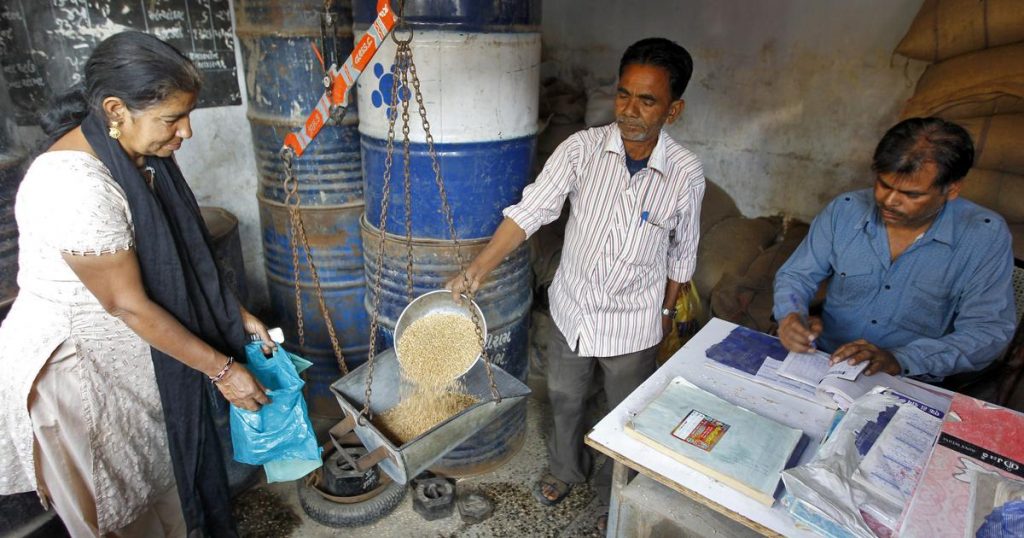
The world is experiencing a micronutrient food and health crisis. Micronutrient deficiency now affects billions of people. Micronutrients are key vitamins and minerals and deficiencies can cause severe health conditions. They are important for various functions, including blood clotting, brain development, the immune system, energy production and bone health, and play a critical role in disease prevention.
The root of the crisis is due to an increased reliance on ultra processed foods (‘junk food’) and the way that modern food crops are grown in terms of the seeds used, the plants produced, the synthetic inputs required (fertilisers, pesticides etc) and the effects on soil.
In 2007, nutritional therapist David Thomas noted a precipitous change in the USA towards convenience and pre-prepared foods often devoid of vital micronutrients yet packed with a cocktail of chemical additives, including colourings, flavourings and preservatives.
He noted that between 1940 and 2002 the character, growing methods, preparation, source and ultimate presentation of basic staples have changed significantly to the extent that trace elements and micronutrient contents have been severely depleted. Thomas added that ongoing research clearly demonstrates a significant relationship between deficiencies in micronutrients and physical and mental ill health.
Prior to the Green Revolution, many of the older crops that were displaced carried dramatically higher counts of nutrients per calorie. For instance, the iron content of millet is four times that of rice, and oats carry four times more zinc than wheat. As a result, between 1961 and 2011, the protein, zinc and iron contents of the world’s directly consumed cereals declined by 4%, 5% and 19%, respectively.
The authors of a 2010 paper in the International Journal of Environmental and Rural Development state that cropping systems promoted by the Green Revolution have resulted in reduced food-crop diversity and decreased availability of micronutrients. They note that micronutrient malnutrition is causing increased rates of cancer, heart disease, stroke, diabetes and osteoporosis in many developing nations. They add that soils are increasingly affected by micronutrient disorders.
In 2016, India’s Central Soil Water Conservation Research and Training Institute reported that the country was losing 5,334 million tonnes of soil every year due to soil erosion because of indiscreet and excessive use of fertilisers, insecticides and pesticides over the years. On average, 16.4 tonnes of fertile soil is lost every year per hectare. It concluded that the non-judicious use of synthetic fertilisers had led to the deterioration of soil fertility causing loss of micro and macronutrients leading to poor soils and low yields.
The high-input, chemical-intensive Green Revolution with its hybrid seeds and synthetic fertilisers and pesticides helped the drive towards greater monocropping and has resulted in less diverse diets and less nutritious foods. Its long-term impact has led to soil degradation and mineral imbalances, which, in turn, have adversely affected human health.
But micronutrient depletion is not just due to a displacement of nutrient-dense staples in the diet or unhealthy soils. Take wheat, for example. Rothamsted Research in the UK has evaluated the mineral concentration of archived wheat grain and soil samples from the Broadbalk Wheat Experiment. The experiment began in 1843, and their findings show significant decreasing trends in the concentrations of zinc, copper, iron and magnesium in wheat grain since the 1960s.
The researchers say that the concentrations of these four minerals remained stable between 1845 and the mid 1960s but have since decreased significantly by 20-30%. This coincided with the introduction of Green Revolution semi-dwarf, high-yielding cultivars. They noted that the concentrations in soil used in the experiment have either increased or remained stable. So, in this case, soil is not the issue.
A 2021 paper that appeared in the journal of Environmental and Experimental Botany reported that the large increase in the proportion of the global population suffering from zinc and iron deficiency over the last four decades has occurred since the Green Revolution and the introduction of its cultivars.
Reflecting the findings of Rothamsted Research in the UK, a recent study led by Indian Council of Agricultural Research scientists found the grains eaten in India have lost food value. They conclude that many of today’s crops fail to absorb sufficient nutrients even when soil is healthy.
A recent article on the Down to Earth website reported on this study that found that rice and wheat, which meet over 50% of the daily energy requirements of people in India, have lost up to 45% of their food value in the past 50 years or so.
The concentration of essential nutrients like zinc and iron has decreased by 33% and 27% in rice and by 30% and 19% in wheat, respectively. At the same time, the concentration of arsenic, a toxic element, in rice has increased by 1,493%.
Down to Earth cites research by the Indian Council of Medical Research that indicates a 25% rise in non-communicable diseases among the Indian population from 1990 to 2016. Estimates show that India is home to one-third of the two billion global population suffering from micronutrient deficiency. This is because modern-bred cultivars of rice and wheat are less efficient in sequestering zinc and iron, regardless of their abundance in soils. Plants have lost their capacity to take up nutrients from the soil.
Increasing prevalence of diabetes, childhood leukaemia, childhood obesity, cardiovascular disorders, infertility, osteoporosis and rheumatoid arthritis, mental illnesses and so on have all been shown to have some direct relationship to diet and specifically micronutrient deficiency.
The large increase in the proportion of the global population suffering from zinc and iron deficiency over the last four decades has coincided with the global expansion of high-yielding, input-responsive cereal cultivars released in the post-Green Revolution era.
Agriculture and policy analyst Devinder Sharma says that high yield is inversely proportionate to plant nutrition: the drop in nutrition levels is so much that the high-yielding new wheat varieties have seen a steep fall in copper content, an essential trace mineral, by as much as 80%, and some nutritionists ascribe this to a rise in cholesterol-related incidences across the world.
India is self-sufficient in various staples, but many of these foodstuffs are high calorie-low nutrient and have led to the displacement of more nutritionally diverse cropping systems and more nutrient-dense crops.
The importance of agronomist William Albrecht should not be overlooked here and his work on healthy soils and healthy people. In his experiments, he found that cows fed on less nutrient-dense crops ate more while cows that ate nutrient-rich grass stopped eating once their nutritional intake was satisfied. This may be one reason why we see rising rates of obesity at a time of micronutrient food insecurity.
It is interesting that, given the above discussion on the Green Revolution’s adverse impacts on nutrition, the paper New Histories of the Green Revolution (2019) by Prof. Glenn Stone debunks the claim that the Green Revolution boosted productivity: it merely put more (nutrient-deficient) wheat into the Indian diet at the expense of other food crops. Stone argues that food productivity per capita showed no increased or even actually decreased.
With this in mind, the table below makes for interesting reading. The data is provided by the National Productivity Council India (an autonomous body of the Department for Promotion of Industry and Internal Trade, Ministry of Commerce and Industry).

As mentioned earlier with reference to Albrecht, obesity has become a concern worldwide, including in India. This problem is multi-dimensional and, as alluded to, excess caloric intake and nutrient-poor food (and sedentary lifestyles) is a factor, leading to the consumption of sugary, fat-laden ultra processed food in an attempt to fill the nutritional gap. But there is also considerable evidence linking human exposure to agrochemicals with obesity.
The September 2020 paper Agrochemicals and Obesity in the journal Molecular and Cellular Endocrinology summarises human epidemiological evidence and experimental animal studies supporting the association between agrochemical exposure and obesity and outlines possible mechanistic underpinnings for this link.
Numerous other studies have also noted that exposure to pesticides has been associated with obesity and diabetes. For example, a 2022 paper in the journal Endocrine reports that first contact with environmental pesticides occurs during critical phases of life, such as gestation and lactation, which can lead to damage in central and peripheral tissues and subsequently programming disorders early and later in life.
A 2013 paper in the journal Entropy on pathways to modern diseases reported that glyphosate (the active ingredient in Monsanto’s Roundup) and the most popular herbicide used worldwide, enhances the damaging effects of other food borne chemical residues and environmental toxins. The negative impact is insidious and manifests slowly over time as inflammation damages cellular systems throughout the body, resulting in conditions associated with a Western diet, which include gastrointestinal disorders, obesity, diabetes, heart disease, depression, autism, infertility, cancer and Alzheimer’s disease.
Despite these findings, campaigner Rosemary Mason has drawn attention to how official government and industry narratives try to divert attention from the role of glyphosate in obesity (and other conditions) by urging the public to exercise and cut down on “biscuits”. In a recent article, Kit Knightly on the OffGuardian website notes how big pharma is attempting to individualise obesity and make millions by pushing its ‘medical cures’ for the condition.
To deal with micronutrient deficiencies, other money-spinning initiatives for industry are being pushed, not least biofortification of foodstuffs and plants and genetic engineering.
Industry narratives have nothing to say about the food system itself, which sees ‘food’ as just another commodity to be rinsed for profit regardless of the impacts on human health or the environment. We simply witness more techno-fix ‘solutions’ being rolled out to supposedly address the impacts of previous ‘innovations’ and policy decisions that benefitted the bottom line of Western agribusiness (and big pharma).
Quick techno-fixes do not offer genuine solutions to the problems outlined above. Such solutions involve challenging corporate power that shapes narratives and policies to suit its agenda. Healthy food, healthy people and healthy societies are not created at some ever-sprawling life sciences park that specialises in manipulating food and the human body (for corporate gain) under the banner of ‘innovation’ and ‘health’ while leaving intact the power relations that underpin bad food and ill health.
A radical overhaul of the food system is required, from how food is grown to how society should be organised. This involves creating food sovereignty, encouraging localism, local markets and short supply chains, rejecting neoliberal globalisation, supporting smallholder agriculture and land reform and incentivising agroecological practices that build soil fertility, use and develop high-productive landraces and a focus on nutrition per acre rather than increased grain size, ‘yield’ and ‘output’.
That’s how you create healthy food, healthy people and healthy societies.
The author writes on food, agriculture and development issues. You can access his two free-to-read, downloadable books on the global food system at Colin Todhunter – Academia.edu















































